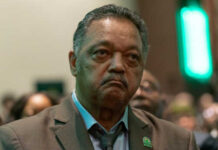
A massive $50 billion federal fund promises to save rural hospitals, but bureaucratic opacity and questionable allocation criteria threaten to leave America’s heartland communities fighting for scraps while government officials play favorites with taxpayer money.
Story Highlights
- All 50 states compete for $50 billion rural health fund despite vastly different rural populations and needs.
- CMS holds discretionary power over half the funds, with vague criteria raising fairness concerns.
- Fund covers only 37% of projected rural Medicaid losses, leaving many hospitals still vulnerable.
- The allocation process mirrors the failed COVID-19 relief distribution that lacked transparency and targeting.
Trump Administration Tackles Rural Health Crisis
The Rural Health Transformation Program represents the largest single federal investment in rural health care, created through the One Big Beautiful Bill Act.
HHS Secretary Robert F. Kennedy Jr. and CMS Administrator Dr. Mehmet Oz oversee the program’s implementation, promising to restore quality health care to every American community. The fund addresses critical needs, as 44% of rural hospitals operate at negative margins and face potential closure due to federal health spending cuts.
Amid public forums and local cries for help, states are also talking with large health systems, technology companies, and others amid intensifying competition for shares of a $50 billion fund to improve rural health. https://t.co/OimtFyDpwF
— CBS News (@CBSNews) November 7, 2025
Bureaucratic Allocation Raises Red Flags
CMS possesses significant discretionary authority over fund distribution, with half the money allocated based on unclear criteria that mirror the problematic COVID-19 Provider Relief Fund distribution.
Health policy experts warn that the lack of transparent, need-based allocation formulas could result in states with smaller rural populations receiving disproportionate funding compared to states with extensive rural health care needs. This bureaucratic approach undermines the program’s stated goal of supporting the most vulnerable rural communities.
The application process concluded with all 50 states submitting proposals despite vastly different rural health care infrastructures. States now await CMS decisions expected in early 2026, creating uncertainty for struggling rural hospitals that need immediate financial relief to maintain operations and serve their communities.
Inadequate Coverage Exposes Deeper Problems
The $50 billion investment, while substantial, covers only 37% of projected rural Medicaid losses over the next decade, according to analysis from health policy organizations.
The Congressional Budget Office projects 10 million more Americans will become uninsured by 2034 due to federal health care cuts, with rural communities bearing a disproportionate impact.
This funding gap suggests many rural hospitals may still face closure or service reductions despite receiving federal assistance.
Rural health care providers require immediate, targeted support to maintain essential services for millions of Americans living in small towns and farming communities.
The program’s success depends on efficient distribution to areas with the greatest need rather than political considerations or bureaucratic preferences that have plagued previous federal health care initiatives.
Sources:
Rural Health Transformation Program Summary – National Rural Health Association
A Closer Look at the $50 Billion Rural Health Fund in the New Reconciliation Law – KFF
All 50 States Seek to Transform Rural Health – CMS
CMS Says All 50 States Applied for Rural Health Fund – American Hospital Association















